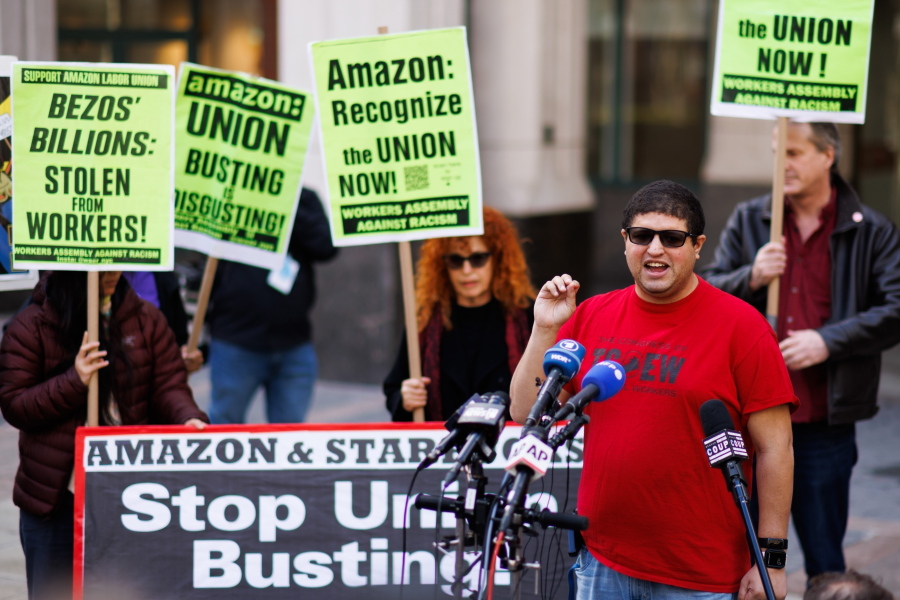The U.S. union membership rate reached an all-time low last year despite high-profile unionization campaigns at Starbucks, Amazon, Apple and other companies.
Union members fell to 10.1 percent of the overall U.S. workforce, according to the Bureau of Labor Statistics. That was down slightly from 10.3 percent in 2021.
The number of workers belonging to a union actually increased by 1.9 percent to 14.3 million. But that failed to keep pace with higher overall employment rates. The number of wage- and salary-earning workers rose by 3.9 percent, the government said.
U.S. union membership has been falling steadily for decades. In 1983, the first year that comparable data is available, the union membership rate was 20.1 percent, the government said.
Public-sector workers, like police and teachers, had the highest unionization rates last year, at 33 percent. Just 6 percent of private-sector workers were unionized.
Automation, outsourcing and lower unionization rates in traditional union strongholds, like auto manufacturing, are among the reasons for the steady decline. But states have also chipped away at unions’ power. Twenty-seven states now have “right-to-work” laws, which prohibit a company and a union from signing a contract that requires workers to pay dues to the union that represents them.
Support for unions has been growing. In a survey published in August, Gallup found that 71 percent of Americans said they approve of labor unions, the highest percentage recorded since 1965.
There has been a surge in demand for union representation as the pandemic has eased. Labor shortages gave workers a rare upper hand, which they used to seek higher pay and benefits from their employers. Median weekly earnings for union workers are about 18 percent higher than those for nonunion workers, the government said.
The National Labor Relations Board reported a 53 percent increase in union representation petitions in its 2022 fiscal year, which ended Sept. 30. A total of 2,510 petitions were filed with the agency, the highest number since 2016.
Dan Cornfield, a sociology professor at Vanderbilt University who studies unions, noted that while unionization rates are declining in some sectors, like telecommunications and clothing manufacturing, they’re rising in others, including hospitality, the arts and entertainment. Younger workers are driving those efforts, he said.



